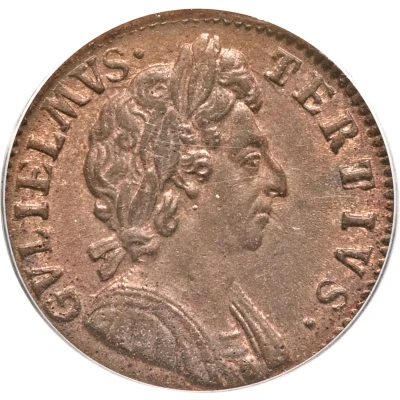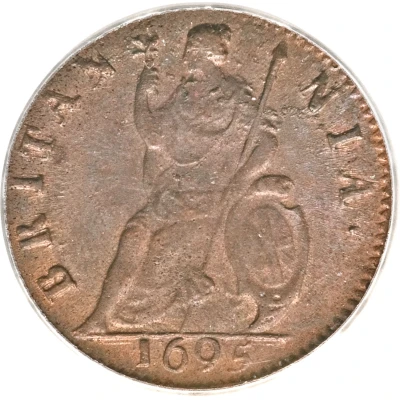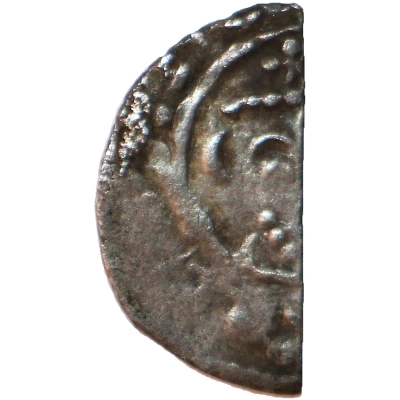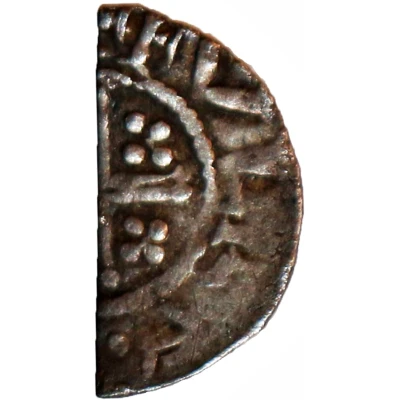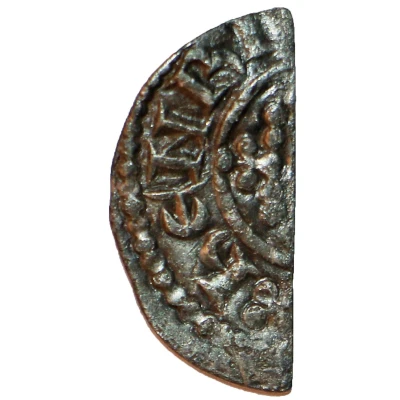
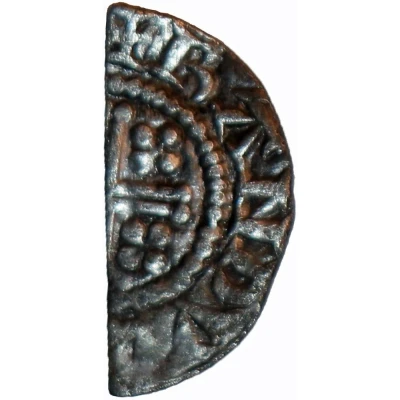

½ Penny - Henry II Short Cross type; class 1b ND
| Silver | 0.7 g | 19.9 mm |
| Issuer | England (United Kingdom, British Overseas Territories and Crown Dependencies) |
|---|---|
| King | Henry II (1154-1189) |
| Type | Standard circulation coin |
| Years | 1180-1189 |
| Value | ½ Penny (1⁄480) |
| Currency | Pound sterling (1158-1970) |
| Composition | Silver |
| Weight | 0.7 g |
| Diameter | 19.9 mm |
| Shape | Half circle |
| Technique | Hammered |
| Orientation | Variable alignment ↺ |
| Demonetized | Yes |
| Updated | 2024-10-08 |
| Numista | N#274368 |
|---|---|
| Rarity index | 83% |
Reverse
Voided short cross with quatrefoils of pellets in angles within inner beaded circle, moneyer and mint name around.
Lettering: +RANDVL[•ON•LVND]
Translation: Randul of London
Comment
House of Plantagenet (1154-1399), Henry II (1154-89), Short Cross coinage (1180-89), Class 1b cut halfpenny.Numerous moneyer and mint name variations exist. Uncut penny ref: Sp#1344, North#963.
Medieval coins were cut into halves and quarters to provide fractional denominations without the need to strike new coins. It is thought these was generally cut at the mint, although it is also likely to have happened during transactions. Cut halfpennies are known in England from Anglo-Saxon times (c. 750s) until Edward I introduced round farthings and halfpennies in 1279.
Interesting fact
One interesting fact about the ½ Penny - Henry II (Short Cross type; class 1b) ND (1180-1189) coin is that it was minted during the reign of King Henry II, who was known for his efforts to reform the English currency and establish a standardized system of coinage. This coin, made of silver, was part of that effort and features a unique design that sets it apart from other coins of the time.
